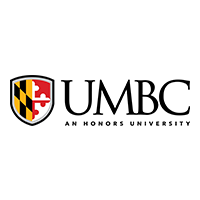Below is a summary of the abstract you submitted. Presenting author(s) is shown in bold.
If any changes need to be made, you can modify the abstract or change the authors.
You can also download a .docx version of this abstract.
If there are any problems, please email Dan at dar78@pitt.edu and he'll take care of them!
This abstract was last modified on May 4, 2018 at 12:47 p.m..

Streptomyces species are well know for the production of bioactive compounds. Thirty bacteriophages were isolated using the phytopathogen S. scabiei RL-34 as as a host, and tested against eleven other Strep. species. Six phages were annotated and used for further comparative analysis against previously isolated Actinobacteriophages.
Five BI phages were characterized, including three BI2s and two BI4s. Cluster BI phages are Siphoviridae with a low average nucleotide identity (ANI) at 0.76 ±SD 0.12, though the sub-cluster ANIs range from 0.88 - 0.98. The gene content similarity (GCS) of the BI cluster is 55.5% ±SD 21.6. One cluster BF Podoviridae was also investigated. When included, the cluster BF phages show an ANI and GCS of 0.86 ±SD 0.12 and 84.5% ±SD 12.9, respectively.
Host preference for Strep. phages was analyzed using named clusters and phylogenetic methods, using reported isolation host as a proxy for host preference. The analysis revealed that host preference is for the most part consistent within Strep. phage clusters, with one host typically dominating each cluster. This trend was confirmed in cluster BI through phylogenetic analysis of concatenated tail protein sequences and experimental host range data.
Gene content phylogenetic analysis of Strep. phages also revealed strong correlation between cluster membership and the presence of tRNA genes. This correlation was used to predict the presence of tRNA genes in cluster BK phages, which has not been annotated on PhagesDB, and was then verified with Aragorn. tRNA gene content was also shown to correlate strongly with phage lifestyle in Strep. phages. The eight annotated cluster BF phages encode 21 ±SD 1.8 tRNAs. Codon usage analysis of BF phages reveals poor adaptation to their host codon usage bias, suggesting a possible adaptive value for these tRNAs. However, multiple genome alignment of BF phages shows substantial variability within the tRNA gene segment, indicating the presence of a possible recombination hotspot.
Several Strep. phages encode either one or two HNH endonucleases on separate ends of their linearized genomes. Phylogenetic analysis using the protein sequences of these HNH endonucleases and their genetic environment reveals that they were most likely acquired independently from Firmicutes prophages. The upstream HNH endonuclease (R1) is present in several Arthrobacter phages and has bona fide homologs in Lactococcus phages. It is harbored in tandem with the downstream HNH endonuclease (R2) in multiple Strep. phages, and in two closely related Rhodococcus phages. R2 shows homology with Lactobacillus phage HNH endonucleases. Gene content phylogeny and BLASTN analysis reveal that, in contrast to the HNH endonucleases, the rest of these phages’ genomes maps to related Actinobacteriophages. These data strongly support the notion that these HNH endonucleases where acquired through lateral gene transfer from Firmicutes prophages.


